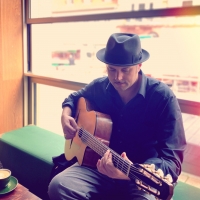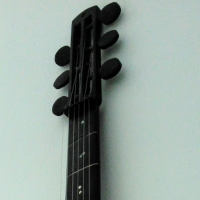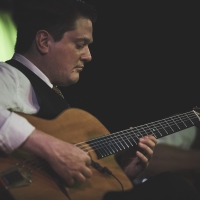DjangoBooks.com
Welcome to our Community!
Categories
- 20K All Categories
- 1.1K General
- 476 Welcome
- 59 Archtop Eddy's Corner
- 146 CD, DVD, and Concert Reviews
- 384 FAQ
- 26 Gypsy Jazz Italia
- 26 Photos
- 202 Gypsy Picking
- 21 Unaccompanied Django
- 15 Pearl Django Play-Along Vol.1
- 17 Gypsy Fire
- 45 Gypsy Rhythm
- 1.4K Gypsy Jazz University - Get Educated
- 130 Gypsy Jazz 101
- 224 Repertoire
- 218 History
- 707 Technique
- 51 Licks and Patterns
- 6 Daniel Givone Manouche Guitare Method Users Group
- 20 Eddie Lang Club
- 1.3K Gypsy Jazz Gear
- 801 Guitars, Strings, Picks, Amps, Pickups and Other Accessories
- 457 Classifieds
- 49 Recording
- 62 Other Instruments
- 18 Violin
- 5 Mandolin
- 22 Accordion
- 7 Bass
- 10 Woodwinds
- 347 Gypsy Jazz Events
- 143 North America
- 109 Europe
- 95 International
In this Discussion
Who's Online (0)
Denis Chang iReal Pro Fakebooks
 Azazzell
CanadaNew
Azazzell
CanadaNew
From Denis Chang:
Here’s the link to my fakebooks. They are still works in progress and were done rather quickly so they might not be perfect. There are two of them, one shows how certain standards used to be played when they were first recorded. Another is my collection of suggestions for changes on various standards. I tried to include all the commonly used changes when possible.
- Link to fakebooks: https://www.dropbox.com/sh/sylgte3vw1qdwkg/AAAJ1eaTprifaX6RttMT16vBa?dl=0

















Comments
It’s a beautiful spring day and I have been sitting out on my back porch enjoying your video.
The big surprise for me was your love of the 20’s and 30’s tunes, Dennis. That’s my kink, too.
(And I was glad to hear you mention Frank Vignola, another master of the earlier era tunes… Frank is one hell of a banjo player, too! I watched him win the Durham Ontario banjo contest when he was about fourteen… he said back then he wanted to be a jazz guitar player when he grew up!)
Anyway.
I greatly agree with the kind of “plain vanilla” chord charts you talked about. The great Lester Young used to tell his accompanists that he just wanted to hear “plain vanilla” chords.
I have also become very partial to “bingo box” charts, especially since usually I don’t need a written melody line because somebody else is usually playing the melody.
Dennis, I hope I don’t embarrass you by saying this, but you have a very nice singing voice. I know it’s not really cool for gypsy guitarists to sing, but you would be a natural for fronting a band!
Great work as usual…thanks!
Will
Edgar Degas: "Only when he no longer knows what he is doing does the painter do good things.... To draw, you must close your eyes and sing."
Georges Braque: "In art there is only one thing that counts: the bit that can’t be explained."
@Lango-Django I don't think your comment should be embarrassing. In fact, I recall one video where Dennis talks about how many Sinti are eager to sing various songs. These might be some of the songs like Schnuckenack performed such as Tschawo, Dui Dui, Me Hum Matto, etc.
Have you heard someone say it isn't "cool" to sing? If so, my guess is they were jealous because they can't sing themselves!
OK I take your point Billy.
Dennis! Sing your heart out! You sound good!
Will
Edgar Degas: "Only when he no longer knows what he is doing does the painter do good things.... To draw, you must close your eyes and sing."
Georges Braque: "In art there is only one thing that counts: the bit that can’t be explained."
i remembe a django in june jam where Jan Brouwer, whenit was his turn to play, sang a verse instead. it was great, and a reminder that almost all of these tunes are songs
Most of these songs have fabulous melodies but we forget that many times there are words that follow those melodies. Sometimes they are beautiful. For example, I love Jardin d'Hiver or Que reste t'il...even J'attendrai. All have a wistfulness to them. I'm just happening to be sitting here listening to Jerry Mengo sing Sweet Sue too. I used to play Honeysuckle Rose at night to my son as a lullaby. He'd ask for the honeybee song! Often when I'm playing rhythm, I'm singing in my head or sometimes a bit out loud (hopefully not to Buco's consternation!) Just compelled to sing the song!
My experience matches much of what Dennis says (though I would never call myself a gypsy-jazz guy, since I never take a solo). My repertory and skill-set are intertwined: I grew up with standards (my parents' music), so much of that music was already in my head when I started playing guitar between ages 10 and 15. But while the words and music were there, you can't really play swing and standards with cowboy chords and folkie technique.
When (at age 50) a friend tempted me out to play in public with his band, I gradually picked up the grips I needed to play standards idiomatically--and I learned to play familiar tunes more easily when I recognized the patterns that repeated, since the composers tended to work from collections of pre-fab sections that they could mix, match, and alter. So the more tunes I learned to play, the easier it got. 28 years later, I have a large box of parts and sections that I can adapt, even when I have to navigate an unfamiliar key. (Though I really dread E-flat.)
The other Aha! experience came from learning shell chords and inversions and then that much of the crucial movement through a progression could be outlined by the 3rd and 7th of the chords. So very basic rhythm accompaniment could consist of those notes, and maybe (absent a bass or keyboard player) the bass line. (Counter to Dennis, I often navigate a tune via the bass line. This is especially useful in country tunes as well as chord-melody arranging.) And since keyboard players often occupy every available bit of harmonic territory, that 3rd-and-7th minimalism gives me a useful, non-clashing role in an ensemble.
I strongly agree with Dennis' advice to listen to as much of the Great American Songbook as possible, and to its entire historical range. And as much as I agree with absorbing-by-ear, I have to say that I've also learned a lot from really accurate printed charts such as Frank Mantooth's "Best Chord Changes" series, which are often based on original scores for the show tunes. (They're also excellent for figuring out chord-melody arrangements.)
That's awesome, Denis Chang is the best!
Great stuff from Denis, as usual. This is a reality on gigs with singers or with guests or jam sessions - they'll call a tune that I don't know and part of me wants to slink away. Singers have their own keys (as I do) and guest players will have their pet tunes. Knowing these things is part of the common "song language" that exists and there are a few things that Denis points out that is true from my painful experience of failing on gigs that I tried to work on.
He also speaks of B sections, which is great too. Good ones to know would be Honeysuckle Bridge and Rhythm Changes bridge. The only thing I slightly disagree with is not learning them in all keys. I'm not suggesting that you should learn every tune in every key. But as an exercise, it is worthwhile learning turnarounds and bridges in a lot of keys. Why? I think it gives you some choices and since many of these have a resolution, I think they're key to know.
Learn the melodies, too. There's tons of melodic and harmonic information here and it's probably the easiest way to learn play over changes.
For the brave or curious, I do recommend Dick Hyman's "Professional Chord Changes..." if you can find it. I don't look at it as a fakebook per se, but I do like how he presents changes as written and then adds some notes as some common alterations or reharms. I pull out a tune a week in this and work it through a few different types of exercises I do. If you're going to purchase, buy used and go to a copy store to get it spiral bound.
Last thing is I went to New Orleans two weeks ago and stayed on Frenchman Street, specifically at the Royal Frenchman. While there were some iPads out there for the gigs with set parts or original tunes, it didn't seem like there were that many charts out there at the jam sessions. I thought that was great.
The Hyman Changes book is very like (and, if I recall, older than) the Mantooth series: accurate, keyboard-biased accounts of standards that provide a starting place for (re)arranging and working out accompaniment.
About that practice-in-all-12-keys notion: I came across versions of that early in my exploration of how to aquire Real Jazz Chops, and while it has a certain obsessive appeal, it's also a bit conservatory-rigorous and perhaps of more theoretical than practical value. (And it might matter more to soloists who want complete mastery of the fingerboard than to rhythm players looking for manageable voicings.)
The practical demands of accompaniment, for me, are more about with having families of grips and understanding their connection to tunes' canonical keys or the frequent alternatives*, as well as to structural features (bridges and turnarounds, as Jim K points out). In my ambitious moments, I try for two keys that use different closed fingerings which themselves can move up or down without running out of neck in either direction.
*Do you call "Summertime" in Am or Dm? Or does the singer insist on Cm? I learned "Girl from Ipanema" in F and C to accommodate our singer--two quite different sets of grips. It was a useful exercise. Though I wouldn't want to have to relearn "Cherokee" in, say, E-flat.
From a soloing standpoint, I stand by learning certain things in as many keys as possible. When you're in the thick of it, it is an excellent tool to have. It's actually less rigorous than you would believe. I'm not talking about learning a phrase in the same position 12 times over - that would be tedious and to some degree impractical. I'm talking about learning a phrase all over the neck using different fingerings. I'm also talking about melodies.
We have had many different singers, men and women, who call things in whatever keys they choose. As I have to sing a bit more to get gigs, my keys get weirder and weirder as I age. Songs that I've been on autopilot for years have changed to Ab or Db or some messed up godawful thing that bass players hate.
For me, these things serve a few different purposes. I don't want to look like an idiot when I'm on a gig, I want to get called back, and it helps me play things as chord melodies (and learn the neck) when I'm sitting by my lonesome.